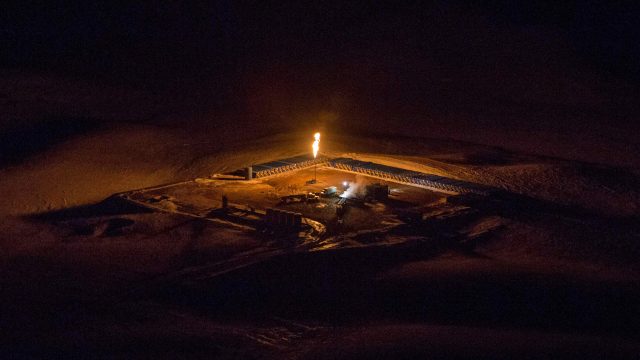The End Of North Dakota's Flaring Problem May Be Nigh

Flaring in North Dakota, which peaked in 2011 at 36 percent and is still at a troubling 29 percent (higher on federal lands), is not something anybody is happy about.
The problem is that in North Dakota gas production is largely a byproduct of oil production. Oil companies have been focused on the oil, not the gas, and with gas prices at rock-bottom lows there just hasn’t been a lot of market incentive to invest in capturing the gas.
But it seems reducing flaring has become very profitable for a couple of biggest operators in North Dakota’s oil fields:
Under current regulations, drillers can flare for up to a year without penalty. After that they have to control the gas somehow such as burning it for power or connecting it to a pipe. Operators can apply for an exemption if such options are impractical. North Dakota’s long-term goal is flaring of 5% to 10%. Companies such as Whiting Petroleum (WLL) and Continental Resources have discussed zero flaring. Not coincidentally, these are two of the most profitable companies in the Bakken.
Midstream companies as of March 2013 had committed about $4B in pipeline and processing projects to collect, modify, and move gas. This should help immensely. It is already helping CLR and WLL flare less.
In the case of Continental Resources , it reported net income of $739 million for 2012, which was a 72% gain versus 2011. Responsible for part of this gain was that it halved its 2011 rate of flaring. The increased production of natural gas is having a very positive effect…
That news puts some perspective to an announcement earlier this year from the North Dakota Petroleum Council that they aim to reduce flaring down as low as 10 percent. At first blush that seems like a heavy lift, but with companies like Continental already setting their sights on zero flaring (and turning big profits along the way) suddenly it doesn’t look so hard.
It’s worth noting that there’s already been major strides on this front. Through November of last year, the amount of gas captured in the state was actually up 147 percent, compared to a 120 percent increase in gas production. That means growth in capture has been outpacing the growth in production, even with gas production (alongside oil production) growing at a break-neck pace.
Environmentalists have, rightfully, been cranky about this issue. But it seems it won’t be an issue in the not-so-distant future.




